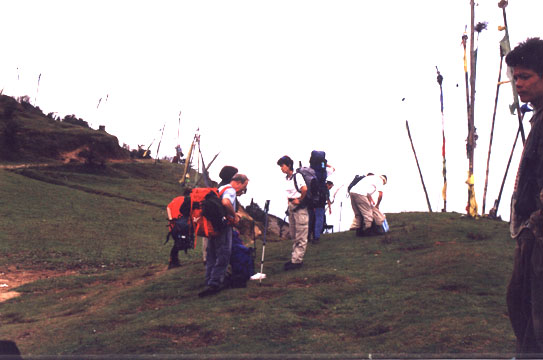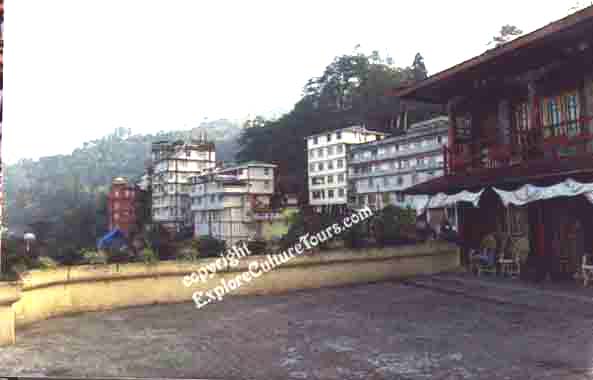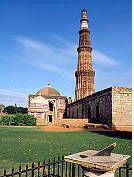
| DACCA |
Today’s capital of independent Bangladesh was
yesterday’s East Pakistan; day-before’s East Bengal.
Glimpse the Suharwardy Uddyan (from where the Late
President Mujibur Rehman gave the call for freedom). Shahid Minar, Gono Bhavan, Banga
Bhavan, Lalbagh Fort, Museum the Tomb of Pari (Fairy Bibi).
| DARJEELING |
 Darjeeling,
2314 m (7000 ft) above sea level is a beautiful hill station on a mountain ridge amidst
delightful forest scenery. From here one can view the Himalayas in all their majesty -
range of perpetual snow culminating in Kanchenjunga 8,579 m (28,146 ft) high. From Tiger
Hill (2621 m) 11 miles from Darjeeling, the great Mount Everest is visible on clear days.
At sunrise and sunset, the snow-clad mountain peaks constitute a glorious feast of colour.
Darjeeling,
2314 m (7000 ft) above sea level is a beautiful hill station on a mountain ridge amidst
delightful forest scenery. From here one can view the Himalayas in all their majesty -
range of perpetual snow culminating in Kanchenjunga 8,579 m (28,146 ft) high. From Tiger
Hill (2621 m) 11 miles from Darjeeling, the great Mount Everest is visible on clear days.
At sunrise and sunset, the snow-clad mountain peaks constitute a glorious feast of colour.
With its forest glades ablaze with rhododenndrons in early summer, quaint villages and interesting hillfolk - Lepchas, Bhutias, Tibetans and Nepalese - thronging its bazzars, Darjeeling has its own charm.
Sightseeing covers Lebong Village which has the highest race course in the world, Mountaineering Institute. House of Tensing Norgay - the Everest Hero and the Botanical Gardens. Also Tiger Hill where the early morning sun displays a panaroma of colours and the sunsets are purple and gold. Beyond in the distance are the Himalayan peaks and the famous Kanchenjunga. Return via the Ghoom monastery.
KALIMPONG : 52 km (32 miles) from Darjeeling at an altitude of 1219 m
(4000 ft) lies Kalimpong, famous for its arts and crafts and for its Buddhist monastery.
The journey to Kalimpong from Darjeeling is picturesque. An ideal place for a quiet
holiday, where Bhutias and Tibetans trade their wares at the Central Market Square.
GANGTOK : The road from Darjeeling to Gangtok is via Rangpotonen in the Tista
Valley. It meanders along the river Tista and reaches Singatam. Then once again through
the forests and open mountain side on the serpentine road, to get one’s first view of
Gangtok, the capital and principal town of Sikkim, tucked away in the clouds, spread out
on a ridge, 5000 ft above sea level. This tiny town at first glimpse, looks like something
out of a fairytale with houses which seem precariously balanced on the slopes of the steep
mountain hills. Apart from gorgeous views of deep valleys, and the snowcapped mountain
ranges, Gangtok has a number of places of interest to offer to the visitor, namely, the
Research Institute of Tibetology, Garden Sanctuary, Buddhist Monastery (attached to the Palace), the Residency - a house for
the Political Officer of the Government of India - an excellent view of the mountains can
be had from this point. Also see the Deer Park and take a drive through the colourful
bazzar.
the Palace), the Residency - a house for
the Political Officer of the Government of India - an excellent view of the mountains can
be had from this point. Also see the Deer Park and take a drive through the colourful
bazzar.
| DELHI |
Delhi, the capital of
India has a fascinating history and a stimulating present. Believed to be the same
Inderprastha described in the "Mahabharta", Delhi has been the seat of power of
number of dynasties - the Rajputs, the Muslim invaders from the North, the Afghan
dynasties followed by Tughlaqs, Sayyaids, the Lodis and the Mughals, who continued the
imperial line, until the British days.
The old city, built by Shah Jehan in the 17th century, stands today as an epitome of the whole history of Indo-Islamic architecture. New Delhi, designed and constructed by Sir Edwin Lutyens and Sir Herbert Baker is a mixture of east and west. The public buildings in red sandstone are in the Moghul style. It has a circular Parliament House and an imposing Central Secretariat in two blocks which stand at the approaches to Rashtrapati Bhavan, the residence of the President of India. Delhi is today the political, economic and cultural capital of the world’s largest democracy and has also become one of the greatest tourist centres of the world.
SIGHTSEEING OF OLD DELHI : Visit Jamma Mosque (1650 A.D.) and drive through fabled Chandani Chowk (Moonlight Square), the main area of the old city. Visit the Red Fort (1639-48 A.D.), built by the builder of the Taj Mahal - Shah Jehan, and famous for its delicately carved, inlaid and marbled Royal Chambers; Raj Ghat, where the father of the nation, Mahatma Gandhi, was cremated (1948 A.D.); Gandhi Memorial Museum (Closed on Mondays); Feroze Shah Kotla (1354 A.D.) - ruins of the old fortress and also the Ashok Pillar (330 B.C.).
 SIGHTSEEING OF NEW DELHI : Visit Humayun’s Tomb (1565 A.D.), aptly called predecessor of
the Taj Mahal. Drive past Safdarjang’s Tomb (1753 A.D.), the Qutb Minar, 72 metres
high and one of the perfect towers of the Persian world. Nearby, amidst the ruins of the
Quwut-ul-Islam Mosque stands the Iron pillar which has stood the vagaries of the weather
and not rusted over 1500 years. An orientation drive through New Delhi includes the
Embassy area (Diplomatic Enclave), Govt. Building (1921-30 A.D.) and Birla (Laxmi Narayan)
temple (1938 A.D.). Drive past Jantar-Mantar Astronomical Observatory (1717 A.D.) and
through Connnaught Place, New Delhi’s main shopping centre.
SIGHTSEEING OF NEW DELHI : Visit Humayun’s Tomb (1565 A.D.), aptly called predecessor of
the Taj Mahal. Drive past Safdarjang’s Tomb (1753 A.D.), the Qutb Minar, 72 metres
high and one of the perfect towers of the Persian world. Nearby, amidst the ruins of the
Quwut-ul-Islam Mosque stands the Iron pillar which has stood the vagaries of the weather
and not rusted over 1500 years. An orientation drive through New Delhi includes the
Embassy area (Diplomatic Enclave), Govt. Building (1921-30 A.D.) and Birla (Laxmi Narayan)
temple (1938 A.D.). Drive past Jantar-Mantar Astronomical Observatory (1717 A.D.) and
through Connnaught Place, New Delhi’s main shopping centre.